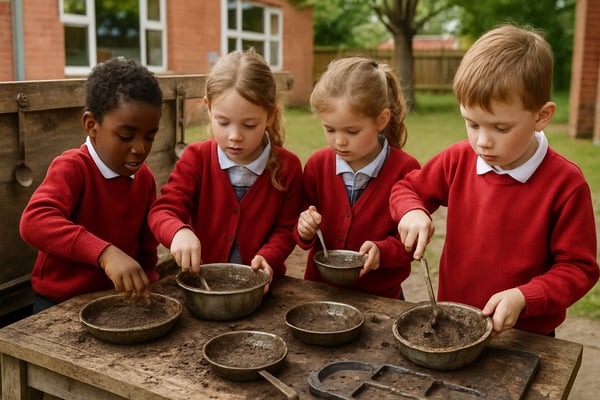While some children learn best in a traditional indoor classroom setting, many others need to experience lessons in a physical way, which is often easier to do beyond the standard four walls.
The benefits of outdoor classrooms
There is research to suggest that learning outside boosts confidence, social skills, communication, motivation, knowledge and understanding. Self-confidence, self-esteem, team work and attitude have also all been proven to improve in an outdoor environment.
Often, when pupils return indoors, they’re better able to stay focused for the remainder of the school day.
What’s more, being outside can make information stick by encouraging a genuine interest in a subject or topic, in a way that just picking up a textbook can’t always do. At the same time, pupils embrace a stronger sense of freedom and independence, which can contribute significantly to their overall development.
So it’s perhaps not surprising that in England there are many key policies and strategies relating to open-air learning, and it has a long history of success.
Ofsted, for example, recommends that schools evaluate the quality of learning outside the classroom to maximise impact on learners’ achievement, personal development and well-being.
Ideas for taking learning outdoors
You can either simply transfer regular classroom lessons outside, or adapt teaching style and activities. So, for example, teachers can ask kids to complete maths worksheets, come up with ideas for a story, or undertake science experiments.
Or if you’re teaching photography, pupils can learn about which lighting works best, how to frame shots and so on, much better outside.
Scientific projects can perhaps be started indoors in the lab and completed outside. Meanwhile, you may well find storytelling, art and creativity-based sessions in particular are enhanced by leaving behind the confines of four walls.
You could start outside activities modestly with some outdoor reading or gardening, or fire up small kids’ imaginations by getting them to make mud pies or ‘magical woodland potions’. Get creative with natural materials for artwork. You could also simply visit your local park or other green space.
Consider using chalk on chalkboards or outdoor surfaces such as walls, fences or concrete for writing practice. Use a range of colours and sizes of chalk – the markings are easily removed with just water, or will dissolve in the rain.
However, while all these are great ideas, they typically depend to a large extent on the weather. Given the vagaries of the British climate, you’ll ultimately need to think of a more permanent solution to regular open-air education.
Outdoor shelters for schools
You’ll need to think of a number of things if you’re introducing outdoor learning to your school, including funding for any additional facilities, and how you will make the most of your available outside space.
Clearly, you’ll also need to bear in mind safety issues such as risk assessments or talking to pupils about potential dangers in advance.
How outdoor canopies for schools can help
School canopies create a permanent, year-round al fresco learning environment, so you can give your pupils a consistently positive educational experience, while plans to head outside won’t be hampered by bad weather. Pupils will be protected from the potentially harmful effects of the sun’s UV rays as well as rain, sleet, hail and snow.
At Kensington Systems, we’ve been installing school canopies for more than three decades, UK-wide. We’ve earned our reputation for customer service excellence and high-quality, innovative products.
Get in touch today to learn more about what we could do for your educational establishment.



.jpg?width=600&height=400&name=Paddock%20SEND%20School%20-%20Spaceshade%20canopies%20with%20post%20protectors%20(6).jpg)
